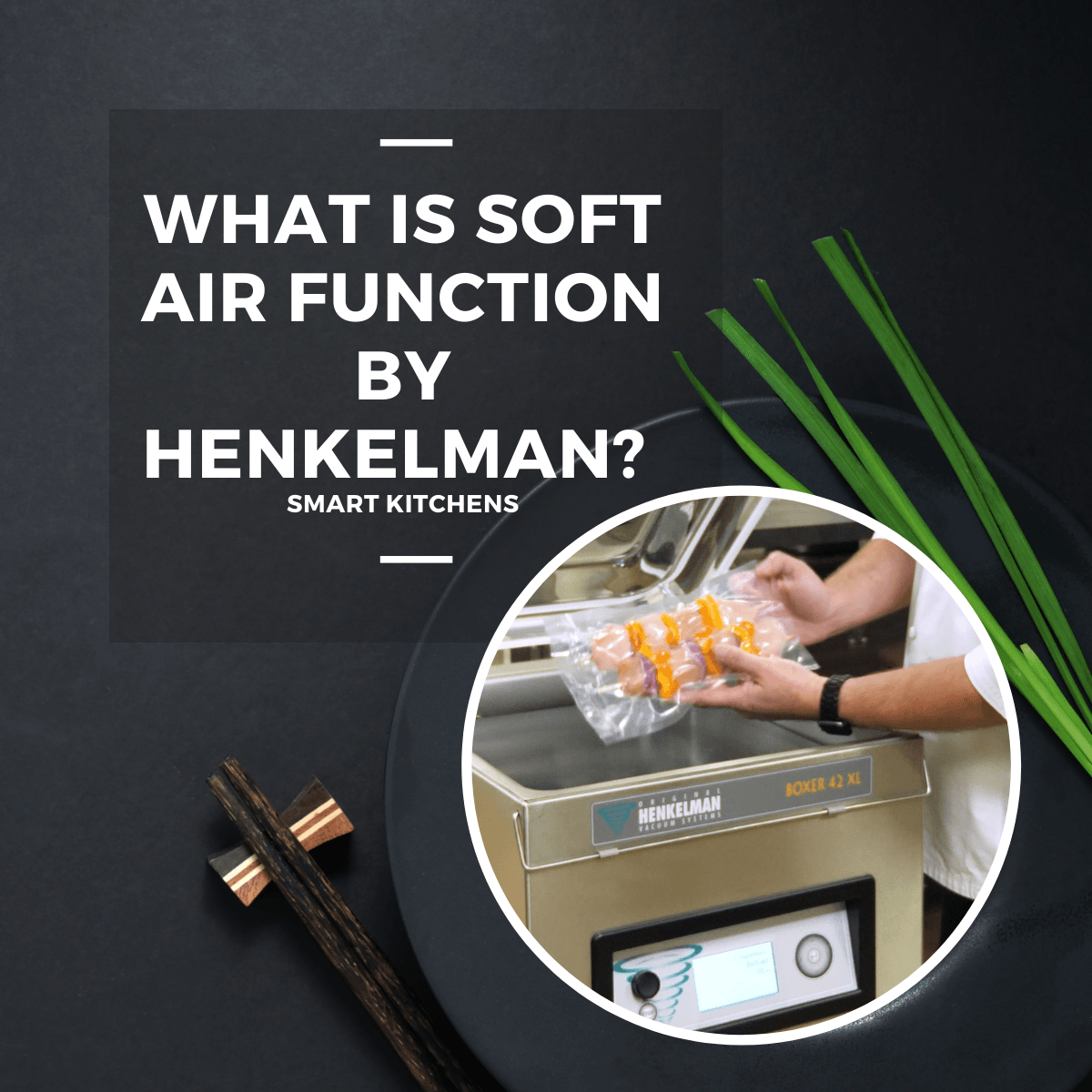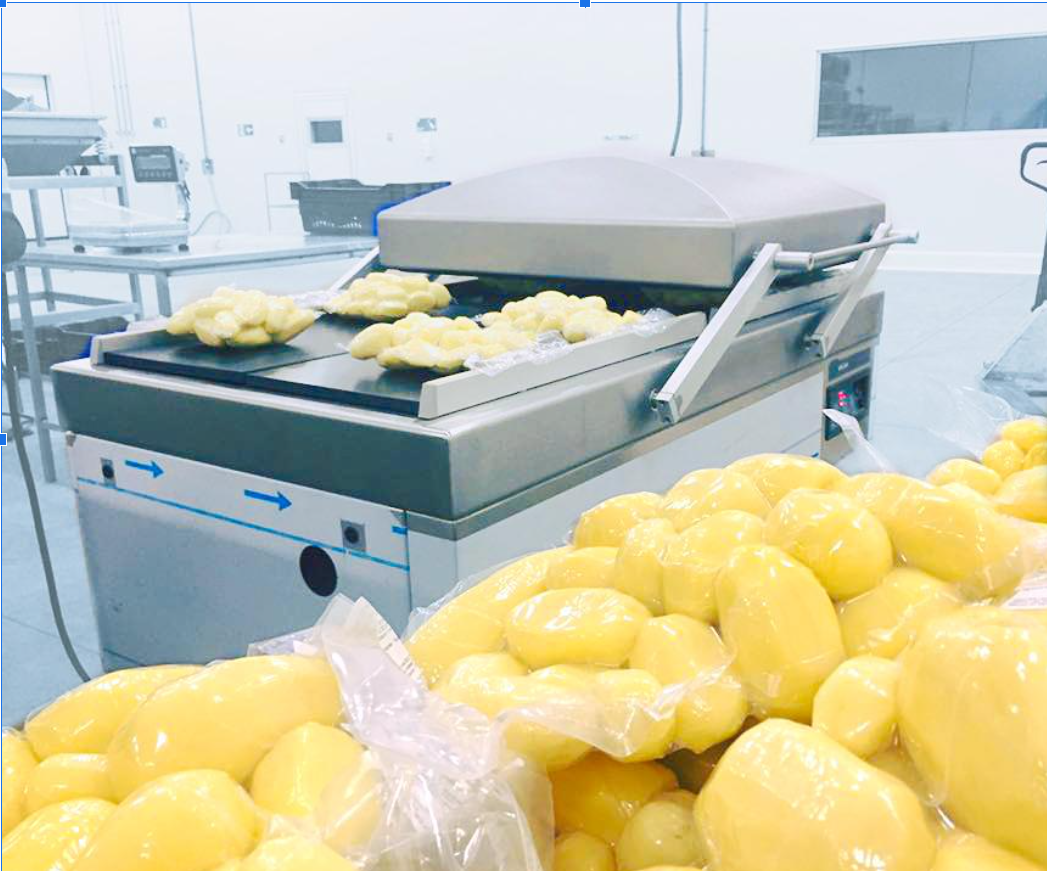What is Soft Air function by Henkelman?
Hunter Vanderpool • March 11, 2022

What is the CombiVAC soft air function?
The CombiVAC soft air function is a standard function on all Henkelman Boxer, Marlin, and Polar chamber vacuum sealers. This function is especially useful for delicate items like fruits and skewers. When you use the Soft Air function, the machine will gradually extract air during a process called the aeration phase. This seals your food item gently and without damage to the product or the vacuum seal bag.

Not all plastic is bad??!! Why do vacuum bags play an important role in reducing food waste. According to data from the United States Department of Agriculture (USDA), an unsettling 40% of food produced annually ends up in the trash. This equates to approximately 36 million tons of food, with a staggering monetary value of $162 billion per year. The majority of this waste is due to spoilage, often within the retail and household sectors. Further, the implications of food waste extend beyond mere economic repercussions. Spoiled food releases methane, a greenhouse gas more potent than carbon monoxide. The resources wasted in the process - water for cultivation, fuel for transportation - exacerbate the environmental impact. Therefore, it is in everyone's best interest to pinpoint effective strategies to minimize food waste. One such strategy lies in the choice of packaging. Packaging: The Silent Hero in Food Preservation Contrary to popular belief, food packaging plays a significant role in combating food waste. Plastic packaging, for instance, contributes substantially to the reduction of food spoilage by providing a physical shield against environmental factors that speed up spoilage. This barrier prolongs the shelf life of food products. Innovations in packaging, such as oxygen-scavenging additives, can further increase shelf life by actively removing oxygen from the packaged environment. This is particularly important given that food now travels much further before consumption. The right packaging not only protects the food during transport but also provides instructions for correct storage and handling, thereby preserving its contents once in the consumer's hands. Intelligent Packaging: A Key to Reducing Food Waste Intelligent packaging design has the potential to reduce spoilage by anticipating common packaging failures. The best packaging companies can predict the causes of these failures and implement design modifications to safeguard the contents. With the right engineering, it's possible to analyze package damage trends and devise solutions to address these specific issues. The Paradox of Packaging While we often associate packaging with environmental pollution, the paradox is that efficient and responsible use of packaging technology could significantly reduce our food waste. For instance, vacuum packaging that prevents oxidation can ensure that meat stays fresh on shelves for eight to fourteen days, compared to the usual two to four. Not only does this cut down on waste, but it also appeals to consumers. According to Mintel's 'Transparent Food Packaging' report, roughly 40% of US shoppers would opt for a product among competitors if they could clearly see its contents. The Vacuum Packaging Solution Vacuum packaging technology, such as that used by Sainsbury's supermarket has shown noticeable benefits. This packaging extends the shelf life of dairy and meat products, which can now be kept in refrigerators for a longer time, thus reducing waste. While vacuum packaging does contribute to carbon emissions, it importantly reduces the waste of the food product produced. For each ton of waste, the equivalent of 3.5 tons of carbon dioxide are released without any product having been put to good use. Conversely, a ton of packaging results in emissions of 1-2 tons. The Challenges of Vacuum Packaging Like any solution, vacuum packaging is not without its drawbacks. One of the key issues is that it is not as easily recycled as other types of packaging. However, considering the rapidly growing global population, estimated to approach 10 billion by approximately 2050, it's urgent that we find ways to feed these numbers. Reducing the amount of food, we waste is a critical part of this, and vacuum packaging is a step in the right direction. The Future of Food Packaging With the ongoing advancements in packaging technology, it's reasonable to believe that we can overcome the current challenges of vacuum packaging, making it a sustainable solution for the future. The aim is to strike a balance between the environmental impact of packaging and its effectiveness in reducing food waste. Conclusion: Fresh Foods Fresh, Reduce Waste and Over Production of Food In conclusion, vacuum bags play an essential role in keeping our foods fresh, reducing waste, and consequently curbing overproduction of food. By keeping food shelf-stable for two to four times longer in the fridge and for months in the freezer, vacuum bags significantly cut down on food waste. This, in turn, leads to reduced food purchasing and lower overall food production. While there are challenges to overcome, particularly in terms of recycling, the benefits of vacuum packaging technology are making a significant difference in our fight against food waste.

The foodservice industry has been confronted with a myriad of challenges in recent years, from the COVID-19 pandemic's disruption of supply chains to the rising cost of ingredients. The year 2022 was particularly difficult for restaurants, as they grappled with increased food costs amidst their recovery efforts. However, comparing the restaurant food cost in 2022 versus 2023, there was a significant increase. On average, a small restaurants food costs increased by $200 per week over the summer months in 2023 over the same period in 2022. Several factors contribute to this upward trajectory. The most evident of these is the elevated inflation rates globally. The rising cost of goods, particularly food items, is not isolated to the restaurant industry. Consumers in every sector are feeling the pinch as prices climb. For restaurants, this translates to more expensive procurement costs for ingredients, which inevitably leads to higher menu prices. Another contributing factor is the escalating fuel prices. The transportation of food items heavily depends on fuel. As such, any increase in fuel costs directly impacts the cost of food delivery to restaurants. This additional expense is often passed along to consumers in the form of higher meal prices. Supply chain disruptions continue to be an issue as well. The global pandemic highlighted vulnerabilities in our supply chains, leading to shortages and increased costs for several commodities. Unless these issues are fully resolved, we can expect them to continue influencing food costs into 2024. While 2022 presented its share of challenges regarding food costs in the restaurant industry, 2023-24 is likely to see a continuation of this trend. The combination of inflation, rising fuel and and ongoing supply chain issues are all factors contributing to the significant increase from 2022 to 2023 & 2024. As the restaurant industry continues to navigate these challenges, it is essential for businesses to explore innovative strategies to manage these increasing costs and maintain profitability. One piece of equipment that can directly impact food cost in food service is vacuum sealing. When implemented correctly into an operation it will reduce food waste, prep time, deliveries and ability to buy in bulk and/or season. All this while keeping fresh and cooked products fresh for longer, never running out of product and keeping the kitchen team organized and ready for the unexpected. Using a chamber vacuum sealer from @Henkelman on average will save you 20% in food costs per week. For a small restaurant that has $1,500 per week in food bill, that would be mean an 8-10 week pay back in the investment of a Henkelman. To learn how your operation can reduce food cost visit… https://www.invacus.com/food-waste-impact-calculator


